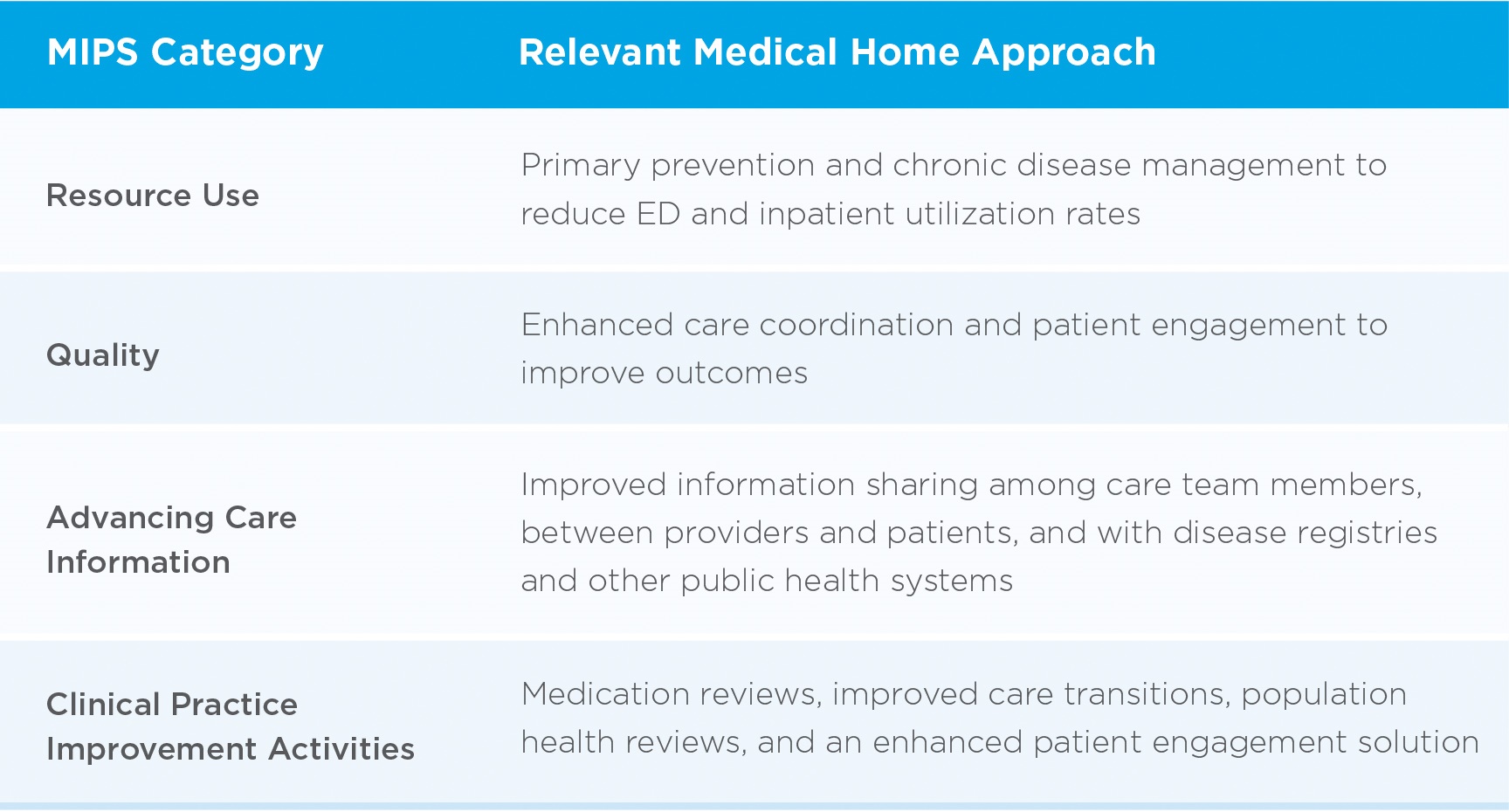The payment reforms introduced in the Medicare Access and CHIP Reauthorization Act make the medical home care model more relevant than ever. In fact, medical home components like patient engagement technologies that were previously considered “nice-to-have,” are essential for achieving better outcomes and more cost-effective care, which are demanded by MACRA.
Medical homes are the conceptual framework for accountable care organizations in general and the Comprehensive Primary Care Plus program specifically. CPC+ and other ACO shared-savings programs qualify as Advanced Alternative Payment Models under MACRA. Therefore, if organizations can meet these program requirements they stand to reap substantial payment incentives. Even providers who are not targeting the specific APMs based on ACOs can benefit from a medical home-like approach to improve their performance under the Merit-based Incentive Payment System program. A medical home approach helps achieve success for each and every MIPS category:

One tenet of the medical home approach is focusing resources on caring for the highest risk patients, thereby deploying limited care team resources more effectively. One of the most resource-efficient ways to improve clinical and financial outcomes for high-risk patients is to enlist them to become active members of their own care team. While this may not be feasible with all high-risk patients, some will be willing and able to take steps to avoid future high-cost and life-disrupting acute services.
Patients with lifestyle-related risk factors such as high cholesterol, high blood pressure, obesity and diabetes can benefit dramatically if they adhere to medical advice between appointments. Providers often interpret patients’ low adherence rates to this interim medical advice as apathy. However, in reality, many patients simply get overwhelmed with the other demands of day-to-day life and could use some help staying engaged in their health self-management. Automated reminders, encouragement, tips and tailored education delivered at home and on mobile devices between medical appointments can go a long way in maintaining such engagement.
A second lesson from medical homes is for middle-risk patients to complement the care team with patient engagement technology to keep them from entering the high-risk pool. These patients can be informed about the lifestyle consequences of allowing their health to decline and offered tools to maintain or improve their current health levels. These patients also benefit from medication and appointment reminders. Additionally, providing them with convenient ways to communicate with providers between appointments, such as secure messaging, keeps them on track when they otherwise might lack the motivation to schedule an appointment to ask a simple question.
Lastly, for low-risk patients, patient engagement technology can educate and encourage healthy day-to-day activities. It can also help them take advantage of simple preventive measures such as keeping up with immunizations and getting recommended screenings. Additionally, technologies such as symptom checkers and provider messaging can help them make better healthcare decisions in those cases where they aren’t willing to schedule an appointment.
Throughout all of these technology-enabled interactions, the medical home is reminding the patient that someone cares and is there to help. This enhances patient satisfaction, which is an important component of virtually every value-based care program. It also increases customer loyalty, which is critically important to any ACO for two reasons. First, if patients shop around for care they may receive more expensive care that doesn’t improve their health, thereby burdening the ACO’s cost-containment metrics. Second, if patients for whom the ACO invests significant resources leave the ACO’s care, those investments are wasted.
Thus, any healthcare provider organization seeking MACRA payments, particularly those that are, or intend to become, ACOs, can benefit greatly from implementing patient engagement practices as suggested by the medical home model. Though these practices have long been viewed as the ideal treatment plan for patients, they have been hard to justify financially because they aren’t directly reimbursable. As the value-based care incentives within MACRA grow year-over-year, the financial decision is being reversed. Soon, provider organizations will lack justification for not investing in patient engagement technology.
Mr. Heaney is a founding partner of Get Real Health.
More articles on coding, billing & collections:
17M enrolled in Medicaid and CHIP since ACA enactment: 3 key notes
Attorneys make final arguments over Aetna, Humana deal — 5 notes
How Health Insurance Innovations became Tampa Bay’s top stock in 2016: 3 notes
